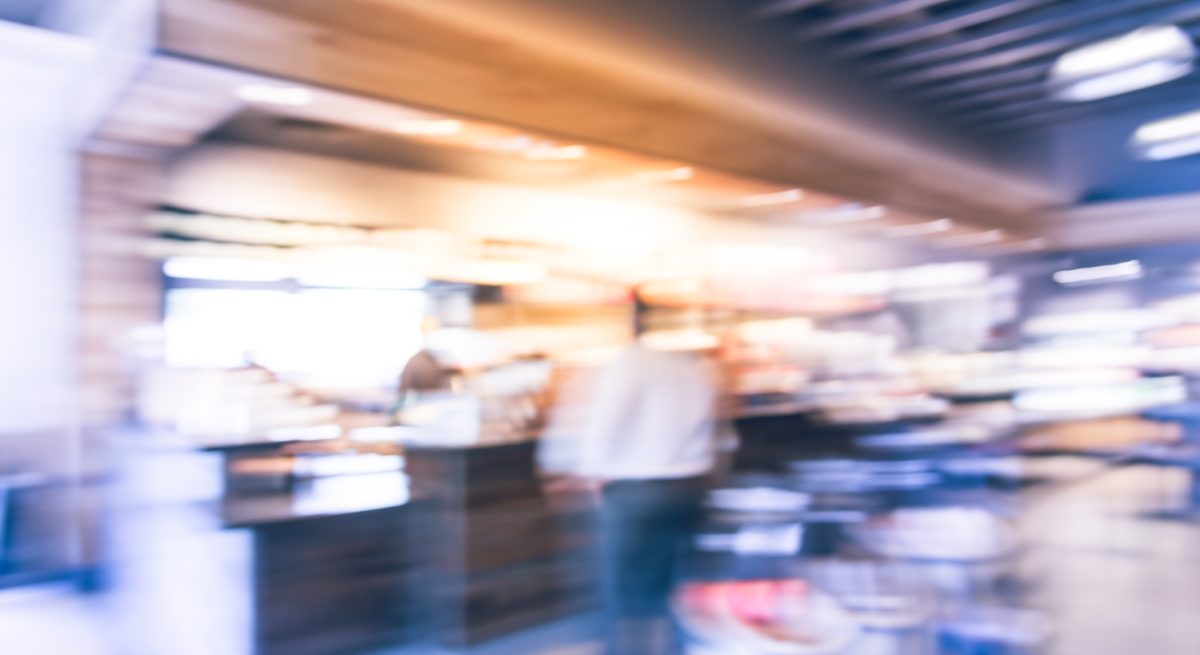Blurring the Lines Between QSR and Retail
4 Min Read By Brian Badillo, Christian Hess
Go into the grocery store and you can find many QSRs’ signatures items on shelves and in freezers – everything from sauces to appetizers to make-it-yourself-at-home ingredients. You can also walk into a trendy clothing retailer and find t-shirts from QSRs with both vintage and current logos. In line at Dunkin’, you can pick up mugs, keychains and shirts along with a French cruller and coffee.
At first glance, factors influencing where to grab a quick bite to eat may seem different from those behind buying a new pair of shoes. Yet they share a similar objective – influencing and serving customers wherever they are and with whatever they want.
Modernizing customer experiences and maintaining satisfaction are top priorities for retail and restaurant owners. While distinct differences exist, here are some key best practices both can leverage to address growing consumer demands.
Where to Go for What?
Retailers have always guided customers to products, and navigation is fundamental to good store design. Now, it’s the same with QSRs. The pandemic massively accelerated the widespread adoption of a variety of paths to purchase, including buy-online-pick-up-in-store (BOPIS), delivery and app-based ordering. Because of this shift, stores and restaurants need customers to navigate their way through multiple channels as quickly as possible, without confusion or stress.
In fact, effortless navigation was critical for survival during the time of no-contact service. In retail, this meant creating an app or web-purchase experience that mirrored the ease of store shopping or making actual in-store shopping safer through faster wayfinding. Retailers also needed to streamline ordering ahead for curbside pick-up.
Seemingly overnight, a critical QSR focus became orchestrating all the ways food could be served in channels that had rapidly accelerated. This included upgrading drive-thrus, curbside, walk-up experiences and delivery, which can complicate both in-store and parking lot flow.
All scenarios call for clear parking lot signage and/or street paint telling guests where to go depending on how they ordered. This also drives planning for more drive-thrus, designated lanes, multiple pick-up windows, parking spaces for quick pick-ups and upgraded apps that help guest know how to get their orders fast once onsite.
Anticipating and then eliminating potential customer wayfinding pain points – whether picking up food or footwear – will enhance customer experiences and brand loyalty.
Create an Experience in a Paper Bag
Residual effects of the past two years continue to impact consumption habits in the QSR space. Customers eat inside QSRs less, leading some brands to explore smaller footprints, and people continue to purchase through a variety of channels vs. returning to solely eating inside the restaurant.
As choices abound, brand connection and experience are even more important and go far beyond a transaction of something to eat or wear. The same is true for retail as guests can easily buy online and never see the inside of a beautifully designed store or engage with the in-person customer experience.
Creating brand connection in a delivery-centric world is largely an uncracked nut but leaves plenty of room for creativity to break the transaction-vs.-experience barrier through messaging or even interaction.
For example, Amazon features its own and partner messaging on the outside of packages, while Hello Fresh meal delivery includes partner offers and messaging along with a periodic “special ingredient” thrown in as a sample from various suppliers. Further, Domino’s trialed drawing a requested picture on the pizza box if added to the “special instruction” section of an app order. One delivery company even partnered with a scent merchant to trap aromas inside of bubble wrap and invited recipients to “pop and smell.”
Wine bottles, cereal boxes and other packaging can be scanned and brought to life with QR code augmented reality. This trend continues in-store, too, as Moe’s featured an in-store poster you could interact with using your phone.
While surprise and delight may be harder than it used to be with far less in-person contact, QSR and retail brands are still expected to deliver memorable interactions.
Digitally Charged Employees
The Great Resignation was big news in 2021 and continues to affect us this year, with retail, hotel and restaurant workers leading a long line of those saying, “I quit.” The associate experience is paramount for retention and getting work done. But, even more, associate satisfaction is vital for a positive customer experience.
Digital initiatives can enhance the employee and customer experience without adding extra labor costs. The first job of retail and QSR associates is to help customers and eliminate friction along the path to purchase. Wayfinding apps can add to the efficiency of your in-store staff by enabling consumers to find products and info easily. Home Depot and Micro Center both launched robust versions of in-store apps that empower wayfinding and product info and videos to help purchasing decisions.
Both companies also tie in point-of-sale (POS) systems to show availability and accurate pricing information down to the store level. The Domino’s “pizza tracker” app keeps employees focused on making pizza instead of answering customer calls about order status or even taking orders.
While easier for the customer and a great way to collect data and build customer profiles, these solutions also lessen the employee burden of multitasking, which improves the product and customer experience. Associates who feel valued will make any customer interaction better. And happier, more engaged employees tend to stay at the job longer.
Pixels and Bites
QSRs and retailers have long leaned into social networks, partnered with social influencers and leveraged crowd-sourced content to create a community of loyal brand advocates. The next digital space is the metaverse – a network of 3D virtual worlds focused on social connection. Brands like McDonald’s, Adidas and Panera have already filed trademarks for virtual products, restaurant operation, NFTs and delivery activity, enabling customers in the virtual world to place orders while there and have food/products appear at their door in the real world.
Brands that adopting this new channel of interaction will be able to capitalize on the best customer experiences that will never take place in a real store or restaurant. Both retail and QSR need to be quick studies of buying habits, experience expectations and transaction triggers in the metaverse. Brands simply putting signage into a game interface or creating a small interaction that wasn’t integrated into the game are tactics of the past. Metaverse experiences must be multisensory and fully realized experiences.
At the end of the day, the ultimate question, too, remains the same for any QSR or retailer, “Did we meet customer expectation today?” That holds true no matter what universe we’re in.



